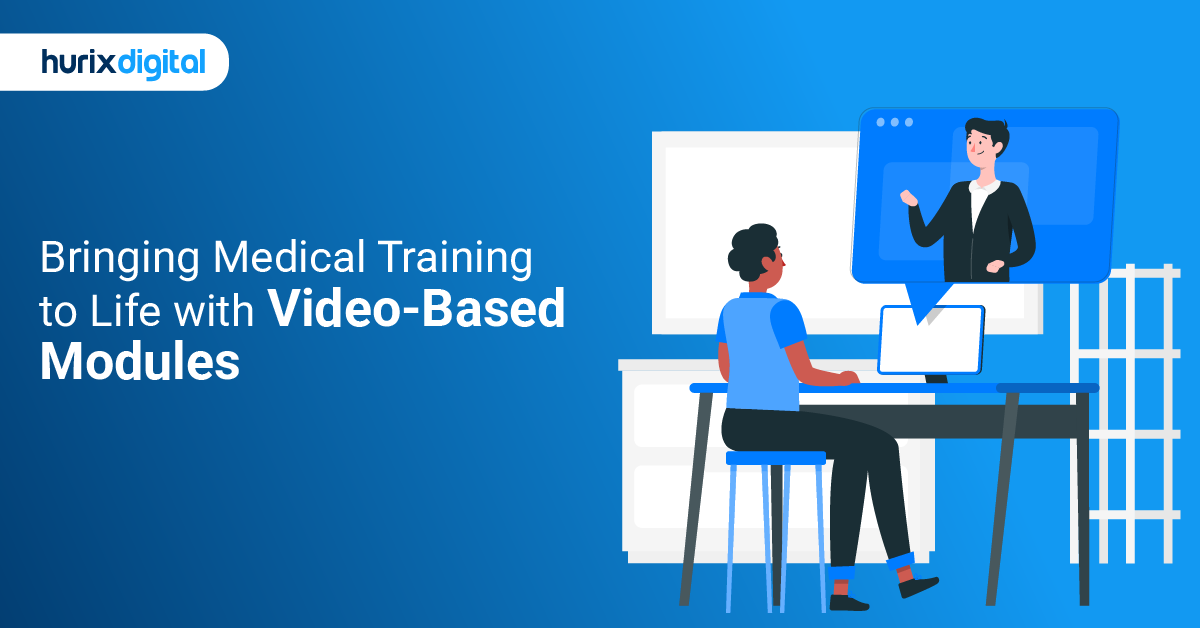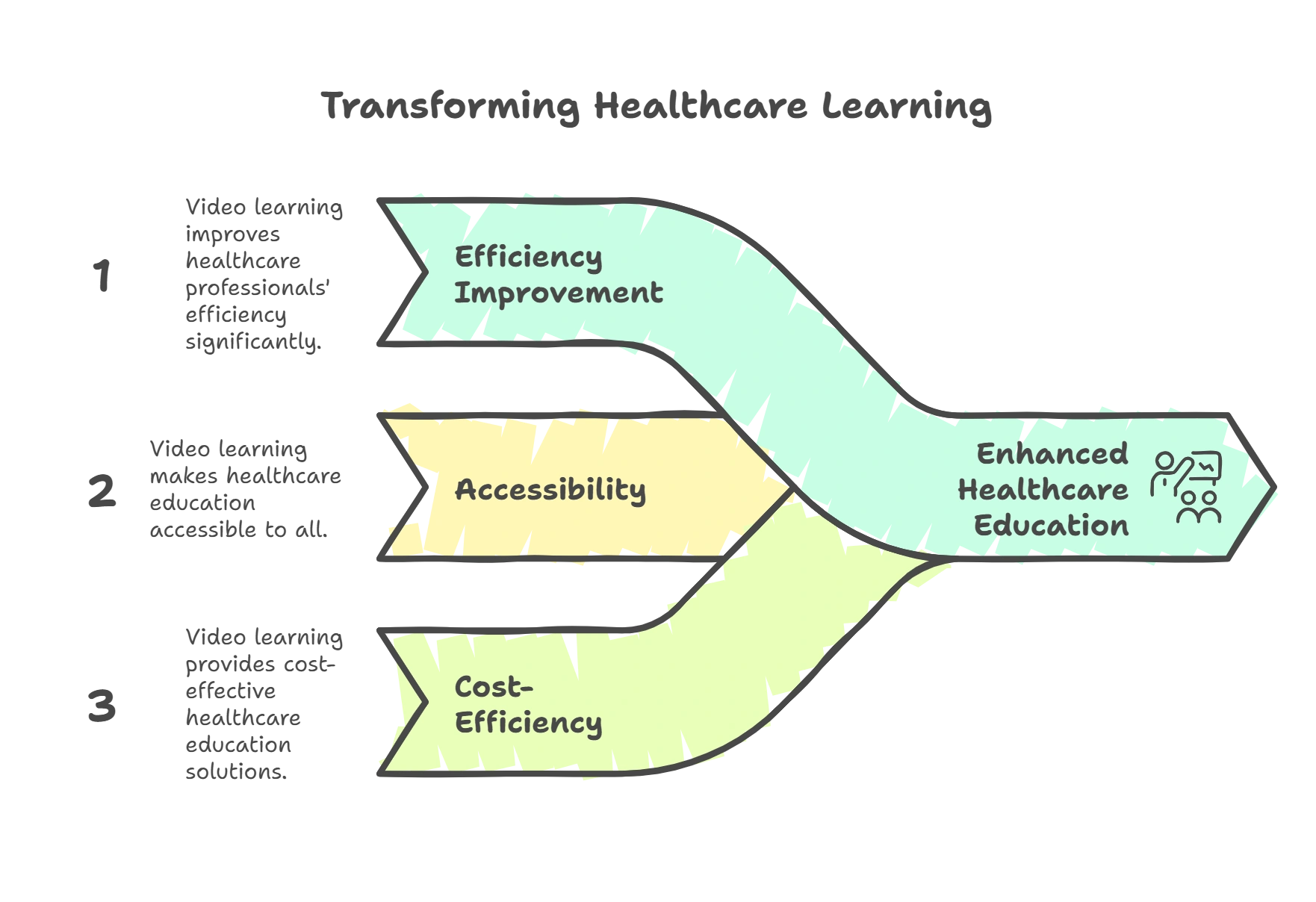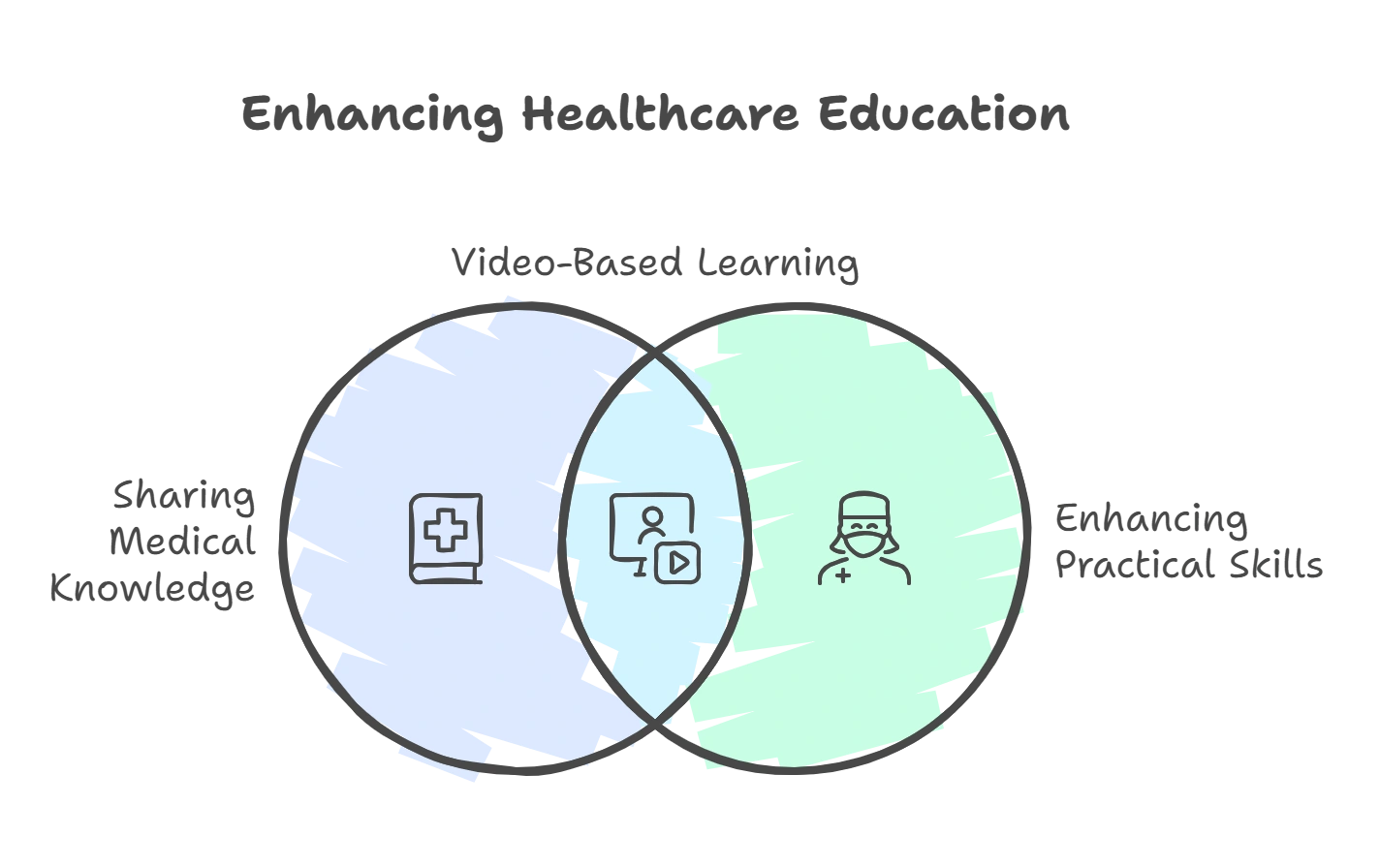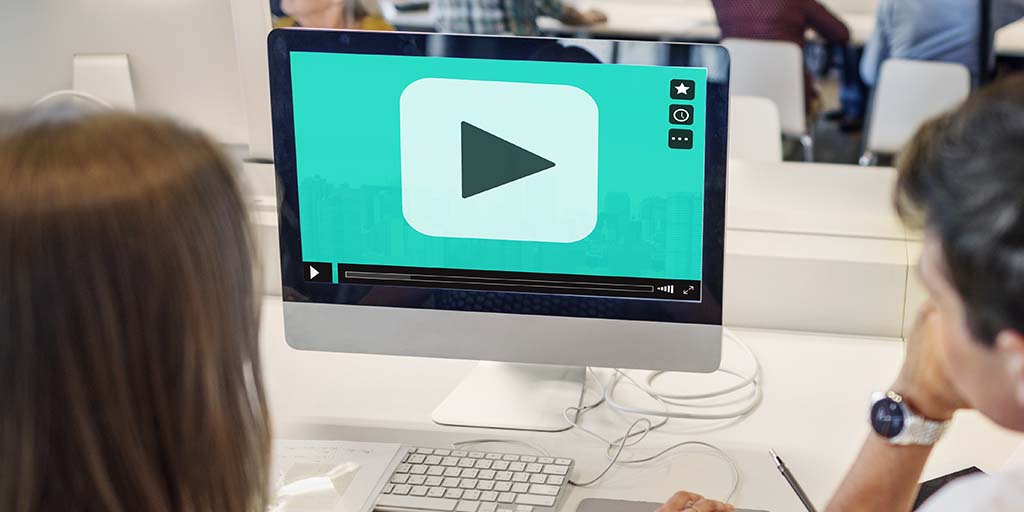
Bringing Medical Training to Life with Video-Based Modules
Summarize with:
Video-based simulations have emerged as a powerful tool for training personnel to handle emergencies with the required skill and confidence. The educational industry is evolving rapidly, and video-based learning is on the buzz, revolutionizing traditional teaching methods. It has significantly increased students’ engagement and comprehension through interactive modules that offer fresh perspectives on complex topics like anatomy and physiology.
It is estimated that 37% of respondents said their employer never held safety drills for medical emergencies, which caused casualties. Video-based simulations can help avoid this by creating a dynamic and realistic environment where trainees can engage in challenging situations, make critical decisions, and hone their response skills in a safe and controlled environment.
Table of Contents:
- What are Video-Based Simulations?
- The Evolution of Teaching with Video-Based Learning
- Video-Based Learning in Healthcare Education
- Benefits of Video-Based Learning in Healthcare Education
- Overcoming Challenges and Maximizing Impact
- Ways to Incorporate Video-Based Learning in Healthcare Education
- Different Emergency Scenarios to Explore
- How to Utilize Video-Based Simulations for Emergency Response Training?
- The Final Word
What are Video-Based Simulations?
Video-based simulations are interactive training tools that use video footage to simulate real-world scenarios or situations. These simulations can immerse participants in lifelike situations, allowing them to make decisions and experience the consequences of their actions in a controlled environment.
In emergency response training, video-based modules can replicate different emergency scenarios, such as natural disasters, medical emergencies, chemical incidents, fire incidents, etc. These simulations are pre-recorded videos that depict the scenario unfolding, with actors portraying individuals involved in an emergency.
The Evolution of Teaching with Video-Based Learning
Video-based learning has transformed traditional teaching methods, offering students a more engaging and interactive educational experience.
A study reveals that learners choose video-based content 2.5 times more often than conventional text. This shift highlights the growing importance of visual media in education.
- Engagement Through Dynamic Learning: Video-based learning promotes active student participation and engagement, moving away from passive lectures to dynamic educational experiences. Research states that 94% say video content increases student satisfaction and improves student performance.
- Transformation of Educational Landscape: The introduction of video-based learning has revolutionized how students interact with complex subjects like anatomy and physiology, providing a more immersive and dynamic approach to learning. Through videos, intricate concepts are brought to life, facilitating a deeper understanding of theoretical principles and practical applications in medical education.
- Enhanced Understanding: Incorporating video-based modules enhances students’ understanding of intricate topics by visually representing theoretical concepts, making learning more accessible and engaging. This visual approach not only aids in knowledge retention but also promotes a deeper understanding of complex subject matter in higher education.
Video-Based Learning in Healthcare Education
Did you know that the human brain processes information via visuals 60,000 times faster than information via text?
According to a study by Joyce and Showers, on average, after three days, we can recall 10 to 20% of spoken words, only 10% of written but an astonishing 65% of a visual image. Not only that, but videos’ auditory and visual nature also attracts a large audience.
Due to better memory recall, faster processing of information, and ease of understanding, the trend of using videos in learning is catching up fast in every sector- aviation, engineering, business, and especially healthcare.
The healthcare industry has undergone a revolution in recent times. As technology advances, staying up-to-date and continuing training is of the utmost importance in healthcare. Videos are a great way to combine auditory and visual enhancement with a traditional classroom-based training program in medical education.
In fact, a video-based learning approach might sometimes be the only solution for learners located in areas with limited resources, like rural areas. Additionally, as attending a classroom is not practical in such a situation, video-based learning provides an effective way to acquire and retain knowledge while also being flexible and convenient.

Benefits of Video-Based Learning in Healthcare Education
Video-based learning in healthcare education can help overcome the challenges arising from traditional educational methods. Let us look at some of these benefits:
1. Improves the Efficiency of Healthcare Professionals
As video integrates sight, sound, and motion, which together catch one’s interest better than any other medium, it effectively presents complex issues more simply.
Also, the brain understands visual information better than text, and about 90% of the information transmitted to the brain is visual. Thus, instructional videos help students retain more information and remain in memory for longer.
Hence, with rising time constraints in medical education, watching a video lesson helps students spend less time learning the material and keeps it in memory longer.
2. Makes Learning Accessible
Students and healthcare professionals often have to be away from their cities for a long time due to internships or medical projects. At such times, they cannot physically attend a training session.
To match their irregular and hectic work schedule, they must provide pre-recorded videos that they can watch anytime and anywhere. This allows learners not to be limited to the classroom and access the video-based modules at their own pace and comfort.
3. Delivers Cost-Efficient Education
As mentioned earlier, healthcare is a very dynamic field. Due to constant technological advancements, it becomes necessary for healthcare professionals to upgrade themselves. This means learning in healthcare education never stops.
Healthcare institutions can leverage video-based learning to create and deliver educational videos without burning a hole in their budget. Video-based learning can also be used to save on training costs, as it makes learning accessible while maintaining training effectiveness.
Overcoming Challenges and Maximizing Impact
While video-based learning offers significant benefits, implementation challenges can be overcome with strategic planning and support, ensuring a seamless and effective learning experience for students.
- Accessibility Considerations: Ensuring video-based content is accessible to all students, including those with disabilities, promotes inclusivity and equal educational opportunities.
- Community Engagement: Engaging with the broader educational community to share best practices and resources for video-based learning can enhance collaboration and innovation.
- Professional Development: Providing opportunities for educators to enhance their digital literacy skills and pedagogical knowledge by using video-based tools can optimize teaching effectiveness. Due to this, 81% of learning professionals plan to use new video content techniques.
- Peer Learning Networks: Establishing peer learning networks where students can share insights and support each other in navigating video-based content enables a collaborative learning environment.

Ways to Incorporate Video-Based Learning in Healthcare Education
Utilizing video-based learning is part of a comprehensive learning strategy that improves the engagement and effectiveness of healthcare education.
Following are the simple ways to incorporate video-based learning in the healthcare industry:
1. Share Medical Knowledge
Videos can be used to share the best practices followed in the healthcare industry, taking healthcare training to a new level. As knowledge sharing is more crucial in the medical field than in any other industry, video-based learning becomes more important in healthcare education.
For instance, you might share a video on a rare surgical procedure or introduce a new technology with fellow surgeons to educate them. In medical education, teachers can also share videos with their students on how to work through a diagnosis. Hospitals can show their staff the right way to enter data in the healthcare record system.
2. Help Enhance Practical Skills
To excel in healthcare, you must actively hone your skills and stay at the top of your game. With so many exciting developments in the field, you must constantly enhance your skills. This is where video-based learning can help.
Video-based modules can help learners simulate real-world scenarios. The key is to be actively involved in the learning process, develop practical skills, and apply theoretical knowledge in clinical settings.

Different Emergency Scenarios to Explore
When it comes to healthcare education, video-based simulations can be a game-changer.
Here are some common emergency scenarios that can be simulated using this approach:
1. Natural Disasters
- Earthquake: video-based simulations can stimulate the aftermath of an earthquake, which includes collapsed buildings, trapped victims, and damaged infrastructure.
- Hurricane: The simulations can depict the challenges of evacuating residents, securing property, and also providing shelter to residents during hurricanes.
- Flood: It shows the consequences of flooding, such as submerged vehicles, stranded individuals, and water contamination.
2. Fire Incidents
- Structured Fire: It can stimulate a building fire and highlight the evacuation process. It can also help in firefighting techniques and search-rescue operations.
- Wildfire: Wildfires can demonstrate the challenges of containing and extinguishing them by protecting property and evacuating residents.
3. Medical Emergencies
In medical emergencies such as cardiac arrest, trauma, and casualty incidents, video-based simulation training can help assess the injury and its remedy. It can also help coordinate with emergency services for assistance.
4. Chemical and Nuclear Accidents
Chemical and nuclear accidents have very harmful aftereffects. Workers in these settings require specialized training. Video-based simulations can digitally place employees in circumstances like chemical spills and radioactive releases, helping them become familiar with these kinds of situations.
5. Workplace Emergencies
Serious incidents are more likely to occur in workplaces with sensitive areas and heavy machinery. Through video-based stimuli, individuals can be trained to react appropriately during an accident at work.

How to Utilize Video-Based Simulations for Emergency Response Training?
Video simulations are highly effective emergency response training as they offer immersive scenarios that closely mimic real-life situations.
Given below are different ways to utilize video-based simulations for emergency response training effectively:
1. Scenario Development
The first step is to identify critical emergency scenarios relevant to the training objectives. These could include natural disasters, medical emergencies, fire accidents, etc. Detailed scripts and scenarios can be developed for each.
2. Video Production
High-quality videos can be produced which accurately depict the chosen scenarios. Ensure that the actors, props, and settings used closely resemble real-life situations.
Professional techniques and equipment can enhance the realism of the simulations. This involves meticulous attention to detail to ensure realistic and practical scenarios convey the essential training objectives.
3. Inclusion of Interactive Elements
Integrating interactive elements into the videos can engage trainees and encourage active participation. This includes decision points where trainees must choose a course of action, like interactive quizzes to test knowledge or curating scenarios that adapt based on trainee responses.
4. Easy Accessibility
It is pivotal to make your video-based simulations easily accessible to trainees through online platforms or Learning Management Systems (LMS).
Compatibility with various devices, such as desktop computers, tablets, and smartphones, facilitates flexible training delivery. This accessibility allows the trainees to participate in the training sessions at their convenience, regardless of location and time constraints.
Also, incorporating features such as offline access and downloadable content can enable trainees to access content in areas with limited internet connectivity.
5. Constructive Feedback
After each simulation, trainees can discuss their experiences, outcomes, and decisions. Fostering an environment encourages critical thinking and constructive feedback, which enhances skill and learning development in the long run.
This maximizes the effectiveness of video-based simulations in emergency response training, as it provides a structured opportunity for participants to critically analyze their decisions, experiences, and actions during the simulations.
6. Scalability
It is a critical consideration in developing and implementing video-based simulations for emergency response training.
By designing scalable simulations, organizations can ensure training programs that can accommodate varying numbers of trainees, adapt to changing training needs, and be cost-effective. This involves creating modular simulations that cover different emergency scenarios and skill levels, which helps organizations customize programs based on specific training objectives and audience requirements.
7. Immediate Feedback
Video simulations help participants receive fast feedback and learn from their actions in real-time. This immediate feedback loop speeds up and improves learning by assisting students in understanding the effects of their choices.
These could involve post-simulation quizzes, skill assessments, and stimulating exercises to evaluate how well trainees apply their knowledge and skills to practical scenarios.
The Final Word
Video-based learning in healthcare education is a simple, cost-effective, and, most importantly, efficient way to educate medical students and healthcare workers in almost any field of expertise and on any topic. Offering a unique way to learn by imparting technical knowledge in the healthcare industry, videos form an important part of any institution’s learning asset.
Hurix Digital is a platform that provides customized learning modules for healthcare organizations tailored to your specific requirements. We provide a comprehensive suite of eLearning services to help you unlock the full potential of video-based learning in medical education.
Want to know more about our services? You can contact us today to get started!
Summarize with:

Senior Vice President – Business Development
at Hurix Digital, with over 25 years of experience in EdTech and workforce learning. He excels in business development, customer relationship management, and scaling digital learning solutions, driving global growth through innovative content, simulations, and AI‑driven training offerings
 A Space for Thoughtful
A Space for Thoughtful 




